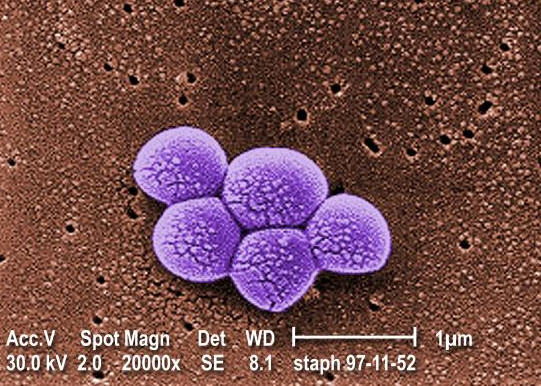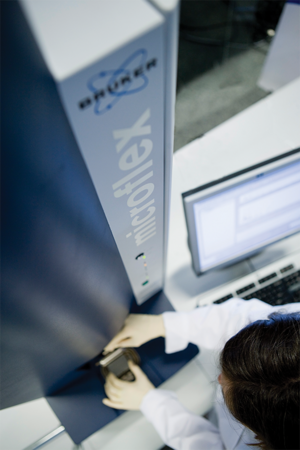About MRSA
Methicillin resistant Staphylococcus aureus (MRSA) was first discovered in the United Kindom in 1961, and it is widely distributed now. Nowadays, MRSA is also konwn as "super bacteria" in hospitals.
About three of every ten healthy people with Staphylococcus aureus in nasal cavity or on the surface of the skin. These bacteria that survive in the nasal cavity or on the surface of the skin do not normally pose a hazard to people. However, if Staphylococcus aureus enters or penetrates the skin, it can cause a variety of infections, such as skin and wound infections. Sometimes, Staphylococcus aureus can even cause blood, lungs or other tissue infections.
MRSA is a Staphylococcus aureus that has developed resistance to certain antibiotics used to treat Staphylococcus aureus infections. It was first discovered in the United Kingdom in 1961, and it is widely distributed now. Nowadays, MRSA is also known as "super bacteria" in hospitals.
Because Staphylococcus aureus can survive on the surface of the skin, MRSA is most often transmitted from person to person in direct contact, and if there is skin infection or trauma, the risk of transmission is higher. Sharing towels, bedding, or other personal items with carriers or infected persons of Staphylococcus aureus may also cause the spread of the bacteria. Currently, MRSA accounts for 17% of all Staphylococcus aureus infections, and approximately 5% will become carriers of MRSA, but most of them will not show signs of infection.
MRSA cause a variety of problems ranging from are skin infections and sepsis to pneuomnia to bloodstream infections (Reference: Centers for Disease Contorl and Prevention, USA) , and MRSA is different from other staph bacteria because it has built up a resistance to most of the antibiotics doctors usually use to treat staph infections (Reference: Kidshealth).
It is reported that the average hospital stay for patients infected with MRSA was three times that of other patients, and the mortality rate was five times that of other patients (Reference: The Burden of Staphylococcus aureus Infections on Hospitals in the United States). Another report said that patients infected with MRSA had a mortality rate 34% within 30 days of infection, while patients infected with MSSA had a similar mortality rate of 27% (Reference: Mortality after Staphylococcus aureus bacteraemia in two acute hospitals in Oxfordshire, 1997-2003: cohort study).

Photo credit: Public Health Image Library (PHIL)
About MALDI-TOF MS
Using MALDI-TOF MS is one of methods for identifying strain species. Comparing to using MALDI-TOF MS method, traditional methods are mostly time consuming. It usually takes three to seven days to identify a bacterial species by using traditional methods, but the method of using a mass spectrometer takes only five to ten minutes.
Matrix-Assisted Laser Desorption / Ionization Time-of-Flight Mass-Spectrometry(MALDI-TOF MS)
It is an emerging strain identification technology. The identification principle is whole-cell protein mass spectrometry fingerprint analysis, and it is compared with the whole protein spectrum of the known strains in the MALDI Biotyper database to quickly identify the identity of unknown strains. This method of identification has several advantages:
- A single fresh colony can be analyzed and up to 94 sample points per sample plate for high-throughput analysis.
- It has been verified by the Taiwan TFDA and the European Union and the US FDA for in vitro medical testing (IVD).
- Bioresource Collection and Research Center (BCRC) and internationally renowned species centers (such as ATCC, DSM, NBRC, CBS, etc.) are widely used in microbial quality management and classification. Identification and rapid screening of a large number of strains.
- If the fist and second names obtained after the comparision analysis are the same, and all of them are greater than a certain score(2.0), then it can be identified.

Photo credit: Bruker